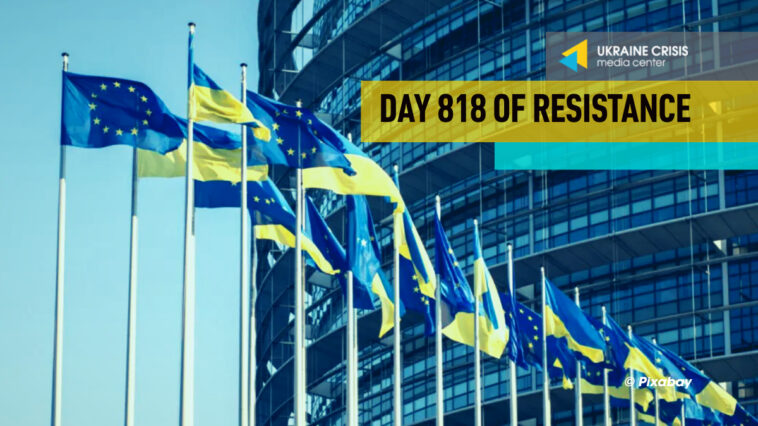The Council of the EU greenlights the use of interest made on immobilized Russian assets to support Ukraine. Seven people were wounded in Kharkiv after drone and missile strikes left houses and vehicles damaged. Russian forces concentrate forces in the Sumy direction to stretch the front line, ISW says.
Council of EU greenlights use of interest made on immobilized Russian assets to support Ukraine
The EU will use profits generated by immobilized Russian assets to help Ukraine as the Council of the European Union passed “a set of legal acts” on Tuesday.
“The EU Council confirmed the agreement on the use of proceeds from the immobilized assets of the Central Bank of the Russian Federation for the benefit of Ukraine,” the Permanent Representation of Czechia to the EU said on X, as translated from Czech.
“Annual revenue is expected to be around EUR 2.5 to 3 billion. Ninety per cent of the expected revenue will be used for military purposes to support the defense of Ukraine,” the message reads.
“A smaller share – 10 per cent – will benefit Ukraine’s renewal and reconstruction from the EU budget,” it said.
In February, the EU adopted a law to set aside windfall profits made on frozen Russian central bank assets.
In March, the bloc’s foreign policy chief Josep Borrell submitted a formal proposal to the EU’s governments to take 90 per cent of revenues from Russian assets frozen in Europe and transfer them to the European Peace Facility that finances weapons for Ukraine.
Seven wounded in Kharkiv after drone, missile strikes leave houses, vehicles damaged
A Russian missile strike on Tuesday morning hit transport infrastructure in Kharkiv after an overnight drone strike damaged more than 25 trucks, buses and other vehicles in the city, head of the regional military administration Oleh Synehubov said. Seven people were wounded.
“The enemy continued to launch [drone] strikes on Kharkiv throughout the night. Debris from Shahed drones fell in four places. At 2:09 local time, two private houses and a garage caught fire from falling debris. Three people — a 61-year-old man, and women ages 69 and 72 were injured. All suffered a severe stress reaction. Two other strikes damaged road and sidewalk surfaces in a neighborhood of private houses, there were no fires and no casualties,” Synehubov said on Telegram. He later added that the overnight attack damaged 25 trucks and buses, and three other vehicles and left windows of a three-story office building of a municipal company shattered. Four private houses were damaged.
“Two people were injured in a missile attack on a transport facility. Seven people in total suffered a severe stress reaction,” Synehubov said.
Russian forces concentrate forces in Sumy direction to stretch front line, ISW says
Russian forces are concentrating limited, understaffed, and incohesive forces in the Sumy direction, but even such a Russian grouping of forces will be able to achieve the likely desired effect of drawing and fixing Ukrainian forces in the international border area, the Institute for the Study of War (ISW) said in a report on May 20.
The deputy commander of a Ukrainian brigade operating in northern Kharkiv Oblast reported on May 20 that Russian forces, including Chechen forces, are accumulating in the Sumy direction but that the limited number of Russian personnel suggests that the Russian objective is to draw and fix Ukrainian forces to the international border area.
Ukrainian military observer Kostyantyn Mashovets stated on May 20 that the Russian grouping in Kursk Oblast consists of 9,000–10,000 personnel. Mashovets stated that this grouping consists of up to three under-strength motorized rifle regiments (each lacking one to two battalions); eight motorized rifle, tank, and infantry battalions; and one airborne (VDV) battalion all redeployed from various units, formations, and military districts; and at least two assault detachments at the echelon of a reinforced company or an under-strength battalion.
ISW continues to assess that even limited Russian activity in other areas of the international border below the threshold of Russian offensive operations could have the effect of stretching Ukrainian forces along a wider front and that Russian forces will be able to draw and fix Ukrainian forces to this area as long as Russia threatens penetrations of other border areas beyond northern Kharkiv Oblast.




